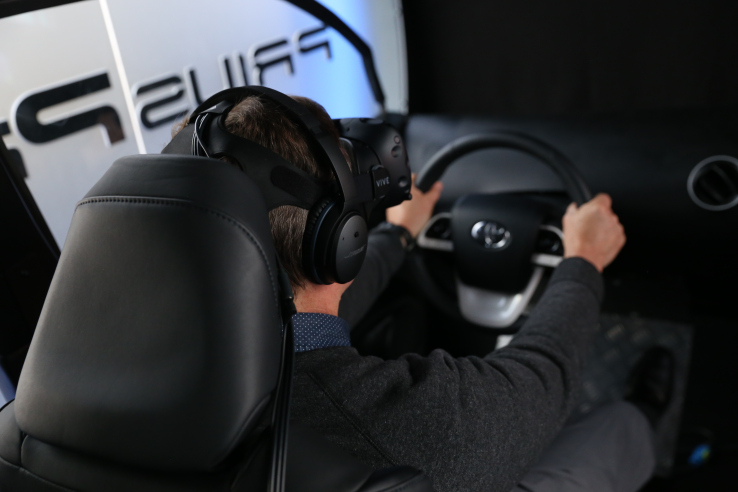

How do you convince a potential car buyer your vehicle is a future-focused choice? One way is to get one of the most iconic creators of cinematic futurescapes to help you build a virtual world that people can drive the car through themselves. Toyota enlisted Syd Mead, the creative visionary behind Blade Runner and Tron‘s vehicles, architecture and more.
Mead provided concept art and designs for Toyota’s VR Prius Prime experience at Disrupt SF 16, which I tried out myself in a sneak preview earlier today. The demo includes a Tilt Brush-like immersive artistic creation component, followed by a “4D” VR ride.
“The idea of inspiring new views into the world of future automotive reality was too exciting to turn down,” Mead said in a statement provided to TechCrunch. “Toyota has created a new world of mobility; a concept realized in a remarkable Virtual Reality tour that brings the future into our world of today.”
Both the art piece and the drive use the HTC Vive, with the ride portion adding physical driver’s seat, complete with the actual steering wheel from the Prius Prime itself. You don’t actually do much driving with the steering wheel, as it moves itself along with the action in the VR world, and the seat moves around to make it feel more like you’re right inside the short featurette as it rolls.
Toyota tapped creative agency Saatchi & Saatchi to create the VR feature, including a custom-built painting environment similar to Tilt Brush. The original plan was actually to use Tilt Brush itself, according to Saatchi & Saatchi Executive Creator Director Dwayne Koh, but they ran into an issue where the Google software couldn’t export the artwork created by users, which is actually used by the immersive driving simulation later on. Koh also noted that their own software lets you paint one-handed, which is much more accessible for casual first-time users.
The drive itself takes you through an animated world featuring landscapes and other cars pulled from Mead’s imagination, and it’s actually really convincing when paired with the movements from the seat. You actually have to buckle up when you use it, which I thought was just something to encourage safety in a cutesy way, but which actually is designed to prevent people potentially being thrown from the bucket seat.
Actually using the demo station was pretty easy, with guides helping you through the process of creating your virtual art, and then handing you off to the driving pod, where you belt yourself into the seat and put your hands on the wheel. The narrative involves a stranger in a bit of a jam looking for a ride, and you volunteering to help him deliver a package. Said package actually ends up being (spoiler alert) the art you created earlier.
It lasts a few minutes long, and the VR combined with the motion seat actually did make me a bit queasy, but that’s not unusual for me with VR. In the end the feeling was only fleeting, and really only at the beginning of the drive.
Overall, it’s an interesting experiment in marketing and immersive narrative, but one that still leaves me thinking we still have a long way to go before we get to a place where the average VR storytelling experience is enjoyable for most.

